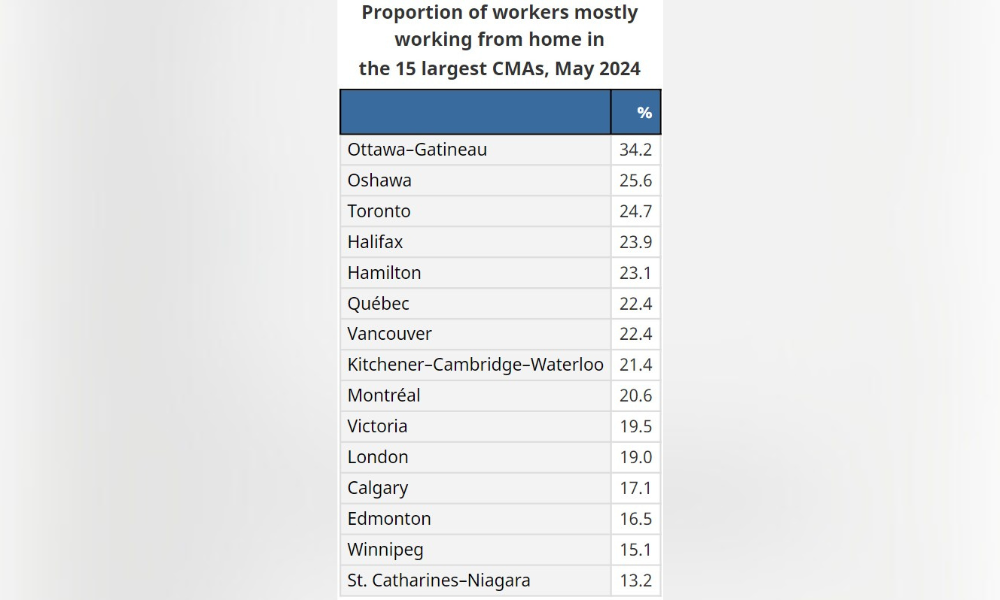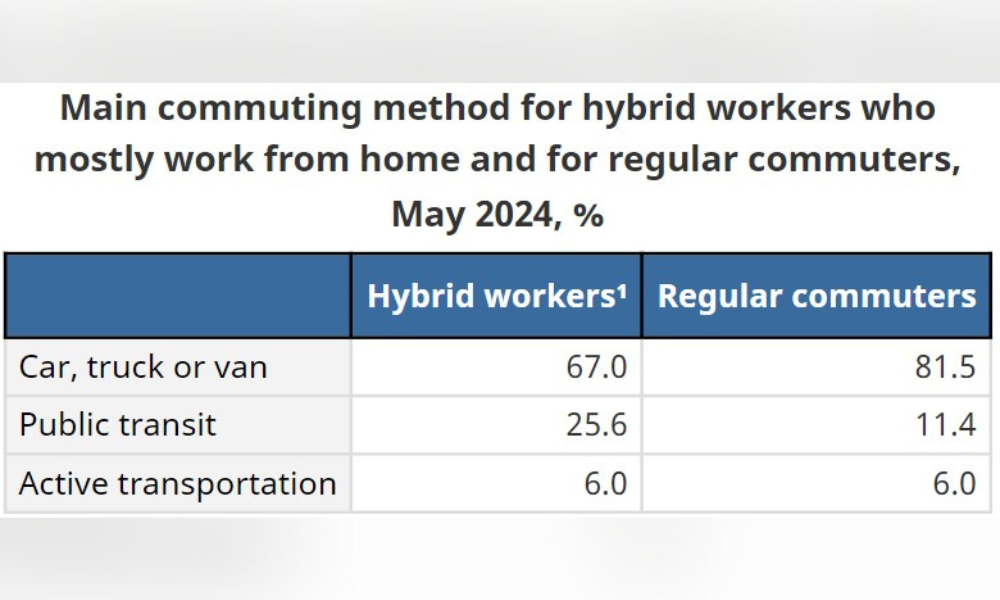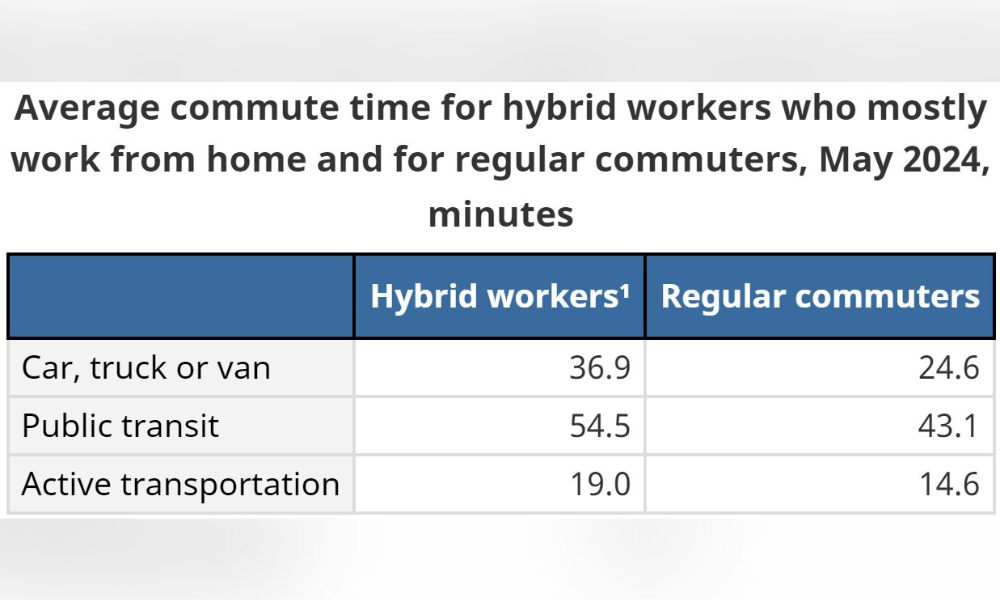
What is the average time people spend commuting?

The number of Canadians who are working from home most of the time seems to continue to drop, based on numbers published by Statistics Canada (StatCan).
The number of commuters reached 16.5 million in May 2024, continuing an upward trend that followed notable declines recorded during the COVID-19 pandemic in 2020 and 2021, according to the report.
Overall, there were an additional 585,000 (+3.7%) commuters in May 2024, driven by employment growth (+373,000 or +1.9%) and by an increase in the share of the employed population working at locations other than home.
There are some workers who would like to be at the office, but their employers are not delivering on their needs, according to a previous report.
The share of workers mostly working from home has fallen every year since May 2021, leading to more commuters, noted StatCan.
In May 2024, 18.7% of employed people worked mostly from home, down 1.4 percentage points from May 2023 and 3.7 percentage points lower compared with May 2022.

Source: Statistics Canada
Even in the biggest metropolitan areas in Canada, the proportion of workers who are mostly working from home are now small. That number is just over one in three (34.2%) in the Ottawa-Gatineau region, and even smaller for the rest of the 15 census metropolitan areas.
With more workers commuting to work, it means they are spending more time travelling each day.
Among commuters, 81.5% mainly used a car (including truck or van) to commute to work in May 2024, down 1.1 percentage points from May 2023 and 2.7 percentage points lower than the record high of 84.2% in May 2022.
Just over one in 10 are taking public transportation.

Source: Statistics Canada
And commuters are spending under one hour, on average, each day for their commute, according to StatCan.
However, the share of commuters with a long commute of 60 minutes or more increased for the third year in a row in May 2024, following a notable drop during the pandemic.
“In May 2024, 9.2% of all commuters had a long commute, up from 8.7% in May 2023 and 8.1% in May 2022. The share of commuters with a long commute in May 2024 was comparable to May 2016 levels, before the pandemic,” said StatCan.

Source: Statistics Canada
Work-from-home teleworkers – those who worked at home on the reference day – saved over an hour, on average, by not having to commute on the days that they worked from home, according to a previous StatCan report.
With many workers commuting to work, it’s important for employers to focus on the idea of return-on-commute (ROC) for employees, according to a Work Design Magazine article.
The ROC refers to the value or benefits employees derive from their journey to and from the office rather than working from home or somewhere else. The idea of ROC is that commuting to the office “should provide a tangible and meaningful return on the investment of time, effort, and cost that employees commit to when traveling to work,” according to the article.
“The relationship between a satisfying workplace experience and an employee’s willingness to commute is intrinsic. Suppose the contemporary workplace does not offer an experience that surpasses what employees have become accustomed to while working from home or in third spaces. In that case, employees will likely choose not to commute to the office,” according to the article.
“With more employees exercising their right to select employers and workspaces that reflect their personal needs and values, the pressure is on organizations to make their offices an attractive destination worth the commute.”